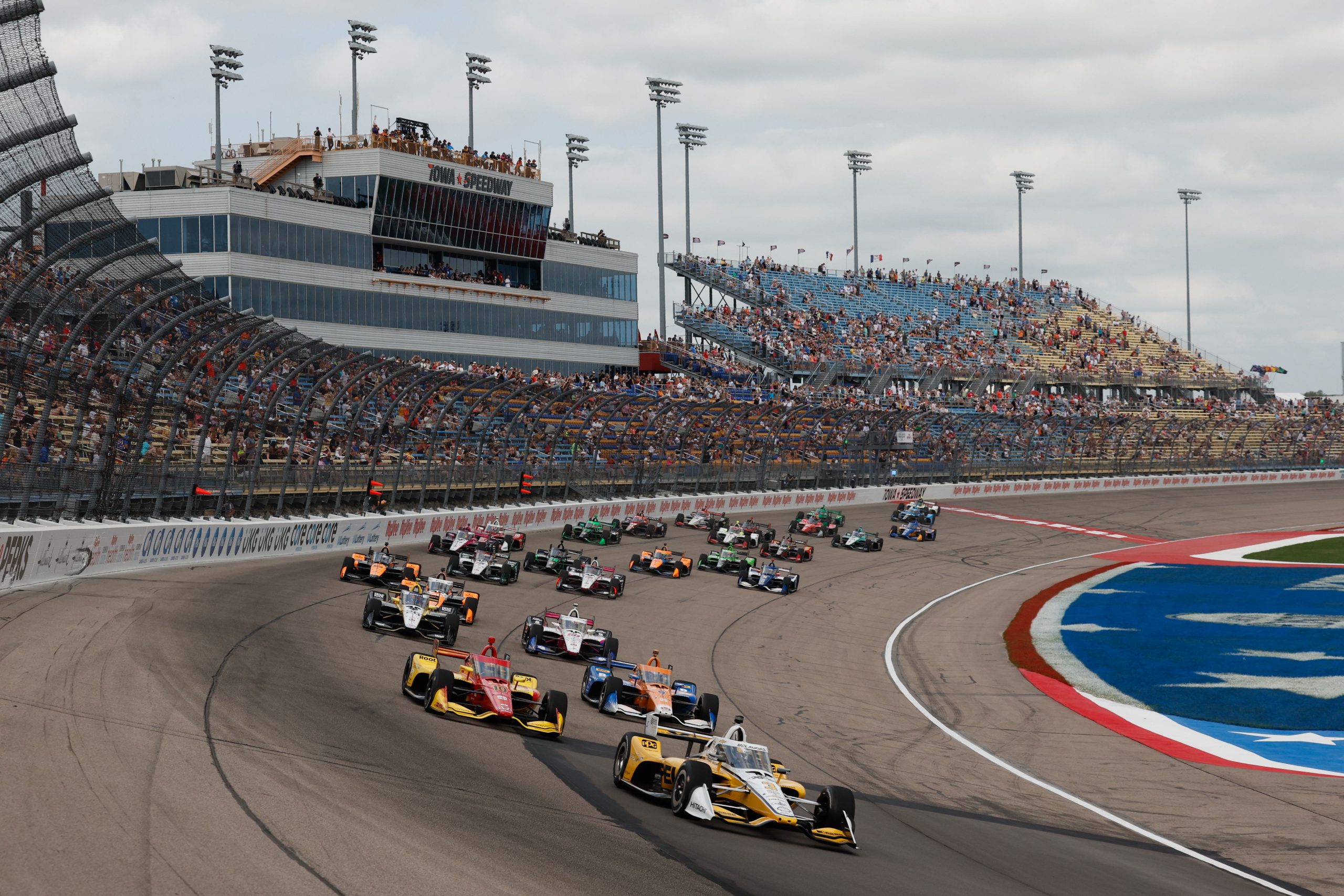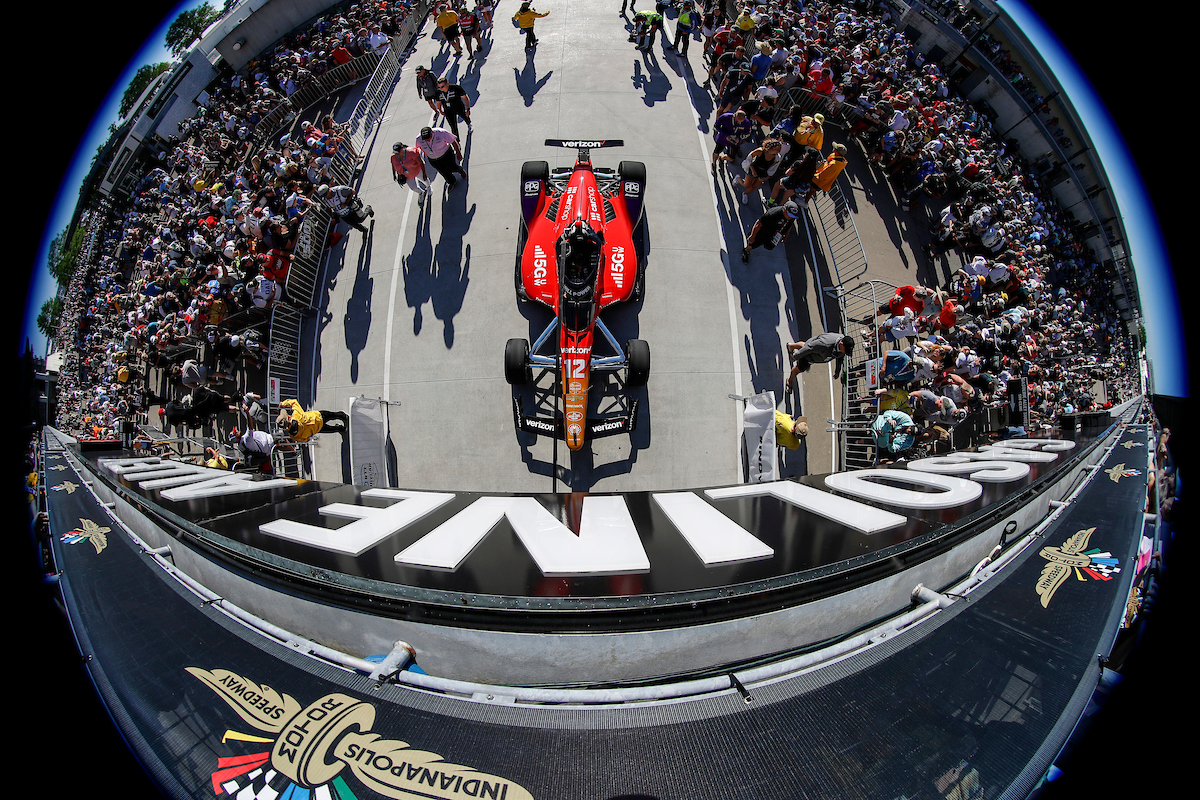Is IndyCar Only Oval?


IndyCar, the premier level of open-wheel racing in North America, is often associated with oval tracks. The Indianapolis 500, arguably the most famous race in the series and one of the most prestigious in the world, is held on an oval. However, it would be a gross oversimplification to label IndyCar as an ‘oval-only’ racing sport.
To put it succinctly, no, IndyCar is not only about oval racing. While oval tracks have indeed played a significant part in the series’ history and popularity, IndyCar is a multi-discipline motor racing championship that includes a mix of speedways, short ovals, road courses, and street circuits.
Ovals, defined by their elliptical shape, have been integral to IndyCar, fostering high-speed, wheel-to-wheel action that challenges the driver’s ability to maintain control and make strategic passes. But it’s not the only flavor in the mix. Road courses, with their complex series of right and left turns, elevation changes, and varying lengths, test the drivers’ technical skills, their cars’ aerodynamics, and the team’s strategy in a different way. Meanwhile, street circuits, often set up in cityscapes with tight turns and unforgiving concrete barriers, present a unique set of challenges with their narrow pathways and bumpy surfaces.
The IndyCar calendar is meticulously designed to ensure a blend of these diverse track types. The 2023 season, for instance, is split relatively evenly between the three kinds of tracks, demanding adaptability and a broad skill set from the drivers and teams.
Another aspect that differentiates IndyCar from being labeled as ‘oval-only’ is the engineering versatility it demands. The design of the cars must be flexible to adapt to the high-speed, high-downforce demands of an oval one week and the technical, lower-speed demands of a road course the next. The versatility required in car setup and strategy further underscores the multi-discipline nature of the sport.
So, when we examine the complexity of IndyCar racing, it becomes apparent that it is far from being an ‘oval-only’ sport. In fact, its charm lies in its versatility, testing the nerve, adaptability, and skill of the best drivers on a variety of track types. With its rich combination of ovals, road courses, and street circuits, IndyCar continues to enthral audiences and challenge competitors, reaffirming its position as a diverse, dynamic, and exciting motorsport series.
Table of Contents
Types of tracks used in IndyCar
To understand the different types of tracks used in IndyCar, with a focus on oval tracks, road courses, and street circuits, we will discuss the unique characteristics and challenges of each track type.
Oval tracks
Oval circuits are a type of track IndyCar uses. With four left turns, drivers race in a counterclockwise direction. This type is mostly found in America and has various bankings.
The table below shows the oval tracks IndyCar races on, with their lengths and bankings:
| Track Name | Length | Banking Degrees |
| Indianapolis Motor Speedway | 2.5 miles | 9-12° |
| Texas Motor Speedway | 1.44 miles | 20°-24° |
| Iowa Speedway | 0.894 miles | 12 to 14° (turns)/50 center |
Ovals bring unique challenges for drivers. High speeds and constant turning lead to hefty G-forces. Plus, they must dodge traffic while racing at full speed.
Road courses
IndyCar Racing courses that comprise of left and right turns, and are not circular in nature, are referred to as ‘Road tracks.’ These courses require a high level of skill, due to varying elevations and tight turns.
The Road course includes several track types. Street circuits, airport road courses, permanent road courses, and transitional circuits vary in terms of track length (2.25 – 4 miles), number of turns (9 – 17), lap time (65 – 135 seconds).
| Track Type | Length (Miles) | Number of Turns | Lap Time (min) |
|---|---|---|---|
| Street Circuit | 2.25 – 2.86 | 9-14 | 1:05 – 1:20 |
| Airport Road Course | 2.4 – 3.7 | 10-17 | 1:15 – 1:45 |
| Permanent Road Course | 3 – 4 | 11-16 | 1:35 – 2:15 |
| Transitional Circuit | Variable | Variable | Variable |
Moreover, rubber build-up from racing tires affects the track grip. To ace IndyCar’s Road Courses, drivers use techniques like brake points and turning-in on corners late. They also adjust tire pressure and opt for pit stops as per weather conditions or traffic.
Street circuits
Table below reveals info on some IndyCar Street Circuits.
| Street Circuit | City | Length (miles) |
|---|---|---|
| St. Petersburg | St. Petersburg, Florida | 1.8 |
| Long Beach | Long Beach, California | 1.97 |
| Detroit Belle Isle | Detroit, Michigan | 2.35 |
| Toronto | Toronto, Ontario, Canada | 1.75 |
Drivers must show amazing control & skill when racing through tight bends & bumpy roads, next to buildings. Course layout differs for each race, adding unexpected excitement.
Teams often use softer tires with more grip for street circuits. This offers better cornering traction & a competitive edge.
Plus, correct suspension setups keep cars balanced on debris-filled surfaces with various conditions, e.g. rough patches & drain covers.
Street circuit racing requires an exact understanding of car capabilities. This helps drivers adjust in time to steer clear of accidents caused by crowded runs or blocked edges.
Overall, it’s an opportunity for drivers to show their skills in a confined space, with plenty of obstacles at high speeds. This makes street circuits one of the most thrilling types of tracks used in IndyCar.
IndyCar’s history with oval tracks
To understand IndyCar’s history with oval tracks, and to get a grip on the importance of these tracks and the challenges that come with racing on them, we’ve divided this section into two sub-sections. The first will look at the significance of oval tracks in IndyCar, while the second will examine the obstacles that drivers face when racing on these challenging circuits.
Importance of oval tracks in IndyCar
Oval tracks have been key for IndyCar’s growth. They give a different type of racing compared to other tracks, so they’re very important for diversity. Plus, ovals are a part of IndyCar’s history and give fans awesome moments and performances from their favorite drivers.
What sets oval tracks apart is the high-speed and tight racing, which creates a thrilling competition and needs special skills. Winning on an oval is regarded as highly as winning a championship or the Indy 500. This shows how crucial ovals are for IndyCar and its followers.
Pro Tip: While many argue about whether oval tracks are relevant today, remember that oval track racing should be appreciated for its history and entertainment value, not seen as outdated.
Challenges of racing on oval tracks
Racing on oval tracks presents unique challenges for IndyCar drivers. Speeding and turning requires precise control and awareness of their environment. In addition, the close proximity of cars can cause accidents and require quick reactions.
However, oval tracks have been part of IndyCar since the beginning. Teams and drivers have adapted by improving strategies, tech, and driving techniques.
Not all ovals are equal. Some, like Texas Motor Speedway, have high-banked turns. Others, like Indy Motor Speedway, have straightaways with less banking. For safety reasons, some ovals have been removed from the schedule.
One example of oval track challenges is the 2019 crash at Pocono Raceway. Takuma Sato lost control and caused a multi-car wreck, which injured drivers – including Robert Wickens, who was left paralyzed. This tragic incident shows the risks of racing on ovals.
In conclusion, oval racing for IndyCar requires skill and precision. Despite the dangers, these races remain an important part of IndyCar’s history and future.
IndyCar’s recent expansion to non-oval tracks
To expand IndyCar’s racing experience, the addition of road courses and street circuits has been introduced, offering diverse tracks to race on. This has paved the way for many benefits, which we will explore in the highlighted sub-sections – Benefits of racing on non-oval tracks and Addition of road courses and street circuits.
Benefits of racing on non-oval tracks
Competing on non-oval tracks has had a great effect on IndyCar racing. These tracks offer different strategies and driving methods, adding an exciting dynamic for drivers and fans alike. Plus, they attract new viewers to the already established fan base!
Overtaking is made easier on non-oval courses, bringing in more excitement. And, they’re typically located closer together than ovals, reducing travel times. Plus, non-traditional courses make it possible to hold events in cities without large oval circuits.
These courses also help with the technical development of IndyCar machines, as they must be modified to fit the terrain. Plus, these races may feature amazing sponsorships and backdrops, like the Long Beach Grand Prix sponsored by Toyota globally for decades, or the Seaport District in Boston.
IndyCar’s future plans for track selection
To understand IndyCar’s future plans for track selection with a focus on balancing oval and non-oval tracks, and exploring the potential of new tracks, read on. Balancing different types of tracks is crucial for IndyCar’s overall success, and their plans for new tracks could bring exciting changes to the sport.
Balancing oval and non-oval tracks
IndyCar is taking a data-driven approach to finding the perfect balance between oval and non-oval tracks. Factors like budget, track infrastructure, and technical suitability for cars are taken into account.
The table below shows this balance:
| Track Type | Number of Races | % of Total Races |
|---|---|---|
| Oval | 10 | 50% |
| Non-Oval | 10 | 50% |
IndyCar’s aim is to give fans and drivers unique experiences. Plus, they want to add international events while maintaining their presence in traditional racing hotspots.
To achieve long-term sustainability and growth, IndyCar could alternate the location of races annually, partner with local communities for logistics support, and survey audiences to understand their preferences.
Is IndyCar Only Oval? – Key Takeaways
IndyCar is all about diversity! Not just ovals, but road courses, street circuits, and temporary circuits too. Plus, there are 17 race events in the series – four of which are speedways with superspeedways, short ovals, and intermediate oval tracks. The other 13 take place on different types of road or street courses across North America.
These tracks have varying features – turns, elevation changes, straightaways, chicanes – which test the drivers’ skills, concentration, and reaction time. Handling sensitivity, oversteer/understeer balance, maximum steering angle needs, tire wear management, fuel capacity impact, and braking systems all add challenge to the races.
Is IndyCar Only Oval? – Frequently Asked Questions
1. Is IndyCar only for oval tracks?
No, IndyCar is not limited to only oval tracks. The series features a mix of road courses, street circuits, and ovals on its calendar.
2. How many oval tracks are included in the IndyCar series?
IndyCar typically includes a total of five to six oval tracks in its schedule each year. These can range from short ovals like Iowa Speedway to the iconic Indianapolis Motor Speedway.
3. What is the difference between oval tracks and road courses?
Oval tracks are typically shaped like an oval with banked turns, while road courses feature a mix of left and right turns and are typically more technical in nature.
4. Can all IndyCar drivers compete on both oval and road courses?
Yes, all IndyCar drivers must be able to compete on both oval and road courses in order to be successful in the series.
5. Are the speeds faster on oval or road course tracks?
On average, speeds tend to be faster on oval tracks due to the banked turns allowing for higher cornering speeds. However, some of the longest straightaways on road courses can see top speeds reaching over 200 mph.
6. What is the most famous oval track for IndyCar?
The Indianapolis Motor Speedway, also known as the Brickyard, is widely regarded as the most famous oval track for IndyCar. It hosts the annual Indy 500, which is one of the most prestigious races in motorsports.










